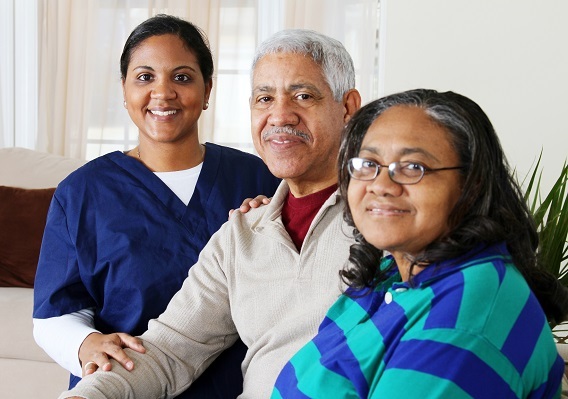 Marijuana History
Marijuana History
Marijuana has had a negative stigma in the United States since the ‘30s and this only intensified in the ‘70s, when Nixon set out on his campaign on the War Against Drugs. Many of the first settlers in the United States grew hemp because it was a strong fiber that could be easily manipulated into rope, clothing, and other materials, ironically. Hemp is harvested from the same plant as Marijuana, but does not produce THC, the psychoactive ingredient commonly associated with a “high”. Many of our founding fathers grew hemp, as it was a staple crop in the South. Hemp was even a major staple in both of the World Wars. Starting in the ‘30s, hemp began to receive criticism, and by 1937 both hemp and the female plant, coined Marijuana, was non-officially banned because of the steep tax placed on it. This lasted up until the ‘70s when it was officially made illegal under Nixon’s War on Drugs. It was not until 1996, nearly 60 years later, that it was recognized in California for medical purposes. Since then, other states have followed suit, and now 29 states recognize medical marijuana, and 8 of those states offer it recreationally.
Cannabinoids and Their Use
Today, Cannabis, as the plant is scientifically named, is able to be more accurately studied. Though studies are still coming out and also need to be replicated, THC, the main ingredient associated with a “high”, are not the only benefactors Marijuana offers. Even though THC is the most common chemical associated with Marijuana, there are multiple other cannabinoids that affect different things. There are 8 different cannabinoids known presently, and they do not cause a “high” or mental discombobulation if taken. Instead they can help treat patients with:
- Arthritis
- Muscle Spasms
- Diabetes
- Alcoholism
- PTSD
- Epilepsy
- Neurological Diseases
- Pain Relief
- Anti-Inflammatory
- Anti-Anxiety
Different Forms of Marijuana
Since the expansion of legal Marijuana, more and more diverse ways of administrating and controlling the effects of Marijuana have revolutionized. Below you can find the best ways to utilize Marijuana for your own personal circumstance.
Smoking- Smoking is the most common form, but it does have adverse effects upon your lungs. For many people in states where marijuana is still illegal, it does provide the most realistic option. Water pipes, also known as bongs and bubblers, can help to filter out some of the tar and resin. Indica’s are widely accepted as the strain that contributes more to medical benefits. It is generally accepted that it helps with anxiety, sleep, pain, and hunger. If you can, a bud tender may be able to advise you on the best strain for what you desire.
Vaporizing- The revolution of E-Pens has made vaporizing an alternative for many people. While it is generally agreed vaporizing is better for your lungs, the side effects are still not corroborated. Many of these studies are for tobacco, so they may not pertain to weed, but there is no consensus yet. There are also larger vaporizers, mainly the Silver Surfer and Volcano, that are widely used. My advice if you use these is to inhale lightly. No more than a second or two of inhalation is necessary, especially if you have never used Marijuana before.
Edibles- Many people prefer edibles because they do not have to smoke or vaporize and thus harm their lungs. While it is still as effective, there are some differences between them. Edibles usually take longer to kick in, but they last longer. This is why you often hear of people taking too much, and then having a horrible time. Edibles can take up to two hours or more to feel any affect, and some people become impatient. We recommend starting small, and build up after you are aware how the edibles will affect you.
Dabbing- Dabbing is something that has only recently come about, and I would not suggest it for any senior. Unless your goal is to get high, like really high, I would avoid them. They require a complex set up, and even experienced smokers can overdo it. Dabbing is for heavy users of Marijuana, and unless you are one, I would say stay away.
CBDs- CBDs can be purchased in many different forms. We discussed them earlier and they provide most of the medical benefits that marijuana offers. You can find them in tinctures, edibles, certain strains of weed or flower, and oils for vaporizers. If you can get it legally, they will have a listing for what percentages of THC and CBDs for whatever you are using contains.
Conclusion
It can be difficult to change, and it is for most of us. Marijuana is no different, and many people have trouble accepting that it can be used for medical use. The stereotype has been ingrained that potheads and stoners want it to be legal, but in reality, it can help many seniors and others deal with severe issues. One has no further to look than the cases of Parkinson’s, epilepsy, and pain management that preside all over the internet to see real life changes. There is no doubt that there is a lot of research that is needed, but for many, Marijuana is offering an alternative. We encourage you to research it further, especially when the medical world seems to prefer opioids. For more information on the differences between opioids and marijuana, look at our article here.
Article written by Nick Schaller with Senior Directory, LLC


Comments